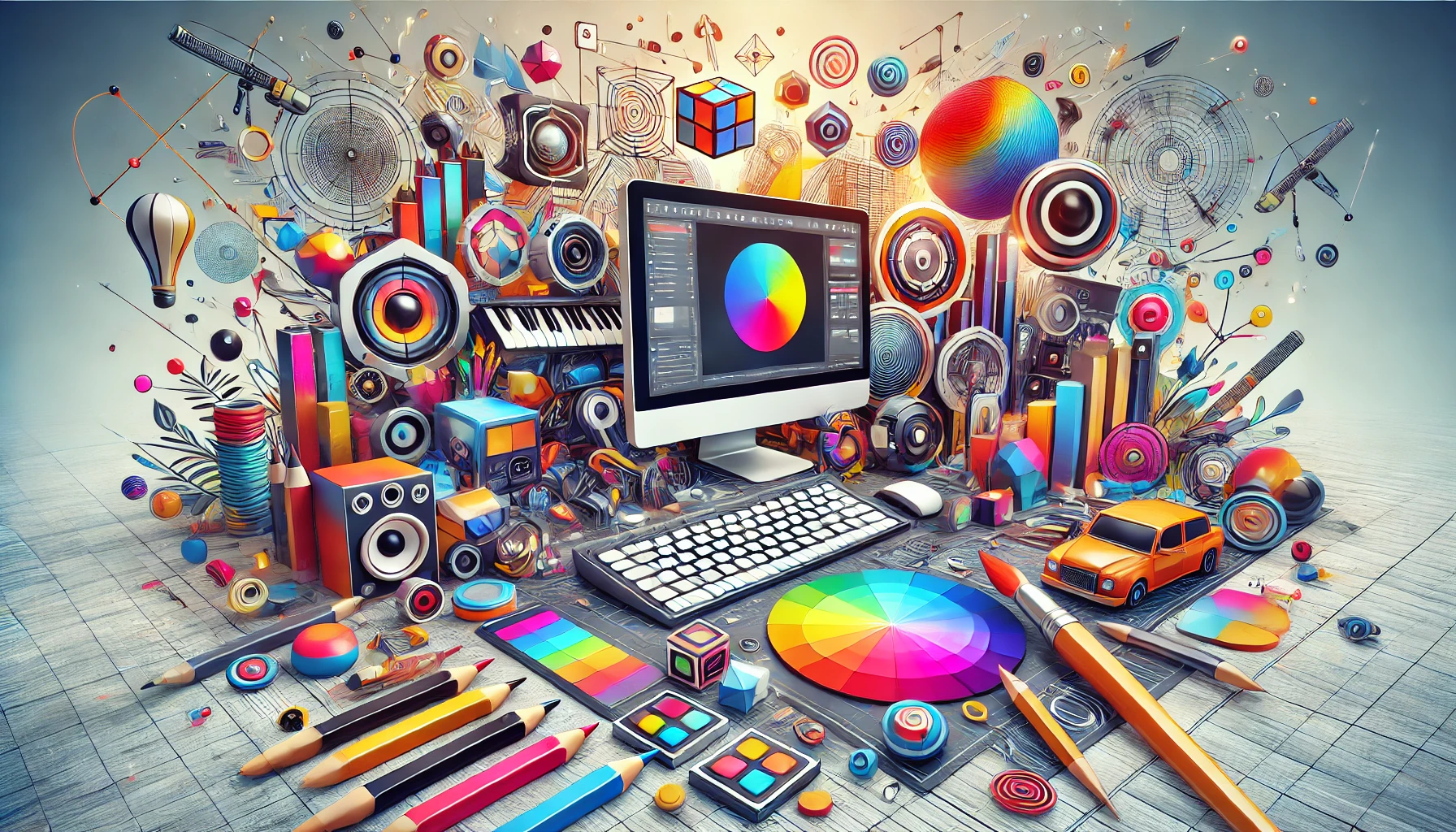Exploring the World of Graphic Design and 3D Animation

In a world dominated by visuals, graphic design and 3D animation have become the backbone of digital communication, from brand logos and social media posts to immersive 3D experiences in movies and games. This blog explores the fundamentals of both fields, the skills needed to succeed, and how these creative disciplines bring ideas to life.
The Art of Graphic Design
Graphic design is about crafting visual content to communicate messages. From marketing to branding, good graphic design enhances a brand’s identity and engages its audience through a blend of typography, color theory, and imagery. But what really makes graphic design impactful?
- The Principles of Design: Balance, contrast, alignment, and repetition are foundational principles that every graphic designer should know. These guide how visuals are organized, ensuring they are both aesthetically pleasing and functional.
- Typography and Color Theory: The art of choosing fonts and colors that evoke specific emotions or reactions is crucial in graphic design. Designers often select fonts that align with the brand’s voice and colors that trigger the desired response from viewers.
- Tools of the Trade: Adobe Photoshop, Illustrator, and Canva are some of the essential tools for any graphic designer. Photoshop is great for image editing and photo manipulation, Illustrator is best for vector design, and Canva is perfect for quick and easy social media designs.
- Career Paths in Graphic Design: From logo design and branding to digital marketing and UX/UI design, the field of graphic design is diverse and continuously expanding.
Diving into 3D Animation
3D animation has transformed from a niche skill to a major force in entertainment, gaming, and even architecture. Unlike traditional 2D animation, which relies on flat, hand-drawn frames, 3D animation creates lifelike scenes and characters in a three-dimensional space.
- How 3D Animation Works: 3D animation involves three primary phases: modeling, rigging, and rendering. Modeling is where objects and characters are created in 3D space. Rigging involves adding a skeleton to animate them. Rendering is the final stage, where realistic lighting and textures bring the animation to life.
- Skills Needed in 3D Animation: Besides creativity, animators need strong technical skills and knowledge of industry software. Mastering tools like Blender, Autodesk Maya, or Cinema 4D is crucial, along with an understanding of lighting, physics, and anatomy.
- 3D Animation in Various Industries: Once limited to the entertainment sector, 3D animation is now used in advertising, virtual reality, product design, and even medical fields for simulations. This versatility has opened up a wealth of career opportunities for skilled 3D animators.
- Staying Ahead of the Curve: 3D animation trends are evolving quickly. From hyper-realistic characters to AI-driven animations, staying updated on these trends is key for anyone looking to build a career in this field.
Graphic Design and 3D Animation: A Powerful Combination
Together, graphic design and 3D animation can create immersive, engaging experiences. This combination allows brands to build unique narratives, reach wider audiences, and make a lasting impression. For instance, a designer with both graphic and 3D skills could design an entire brand identity, complete with animated logos, 3D product showcases, and interactive website elements.
How to Get Started
- Choose Your Tools: Start with industry-standard tools, whether it’s Adobe Creative Suite for graphic design or Blender for 3D animation.
- Practice and Build a Portfolio: Experimenting with designs and animations helps refine your style. Use platforms like Behance or ArtStation to showcase your work and attract clients.
- Keep Learning: Both fields are highly dynamic, with new trends and tools emerging regularly. Following tutorials, joining design communities, and taking online courses can help you stay current.
- Network with Professionals: Joining online forums and attending industry events can help you build connections with others in the field and find potential clients or job opportunities.
Conclusion
Graphic design and 3D animation are not just skills; they’re powerful tools for storytelling in the digital age. By combining visuals with motion, designers can create experiences that engage, inform, and inspire audiences. Whether you’re just starting or looking to expand your expertise, graphic design and 3D animation offer exciting career paths and creative possibilities.
 In a world dominated by visuals, graphic design and 3D animation have become the backbone of digital communication, from brand logos and social media posts to immersive 3D experiences in movies and games. This blog explores the fundamentals of both fields, the skills needed to succeed, and how these creative disciplines bring ideas to life.
In a world dominated by visuals, graphic design and 3D animation have become the backbone of digital communication, from brand logos and social media posts to immersive 3D experiences in movies and games. This blog explores the fundamentals of both fields, the skills needed to succeed, and how these creative disciplines bring ideas to life.
Leave a comments